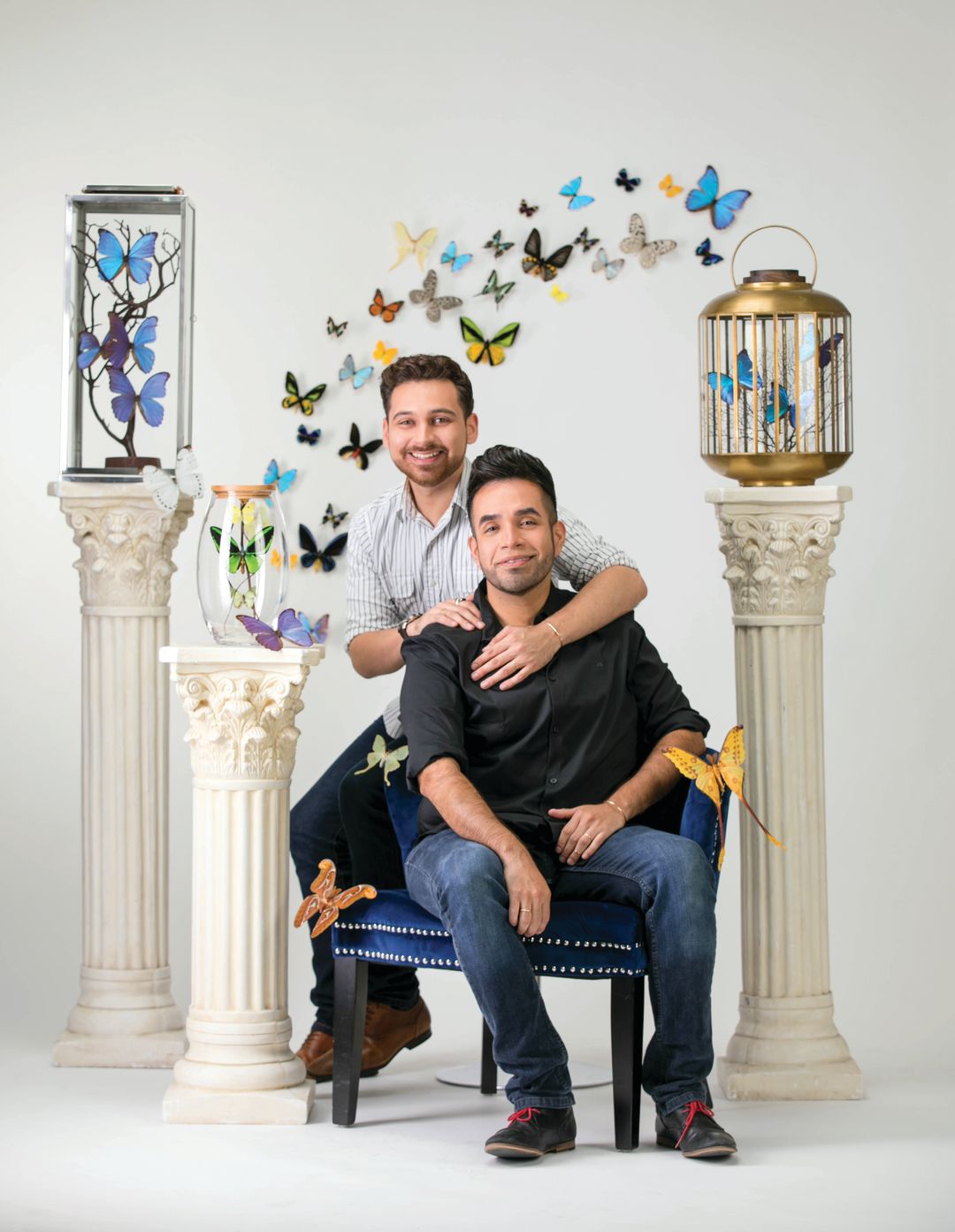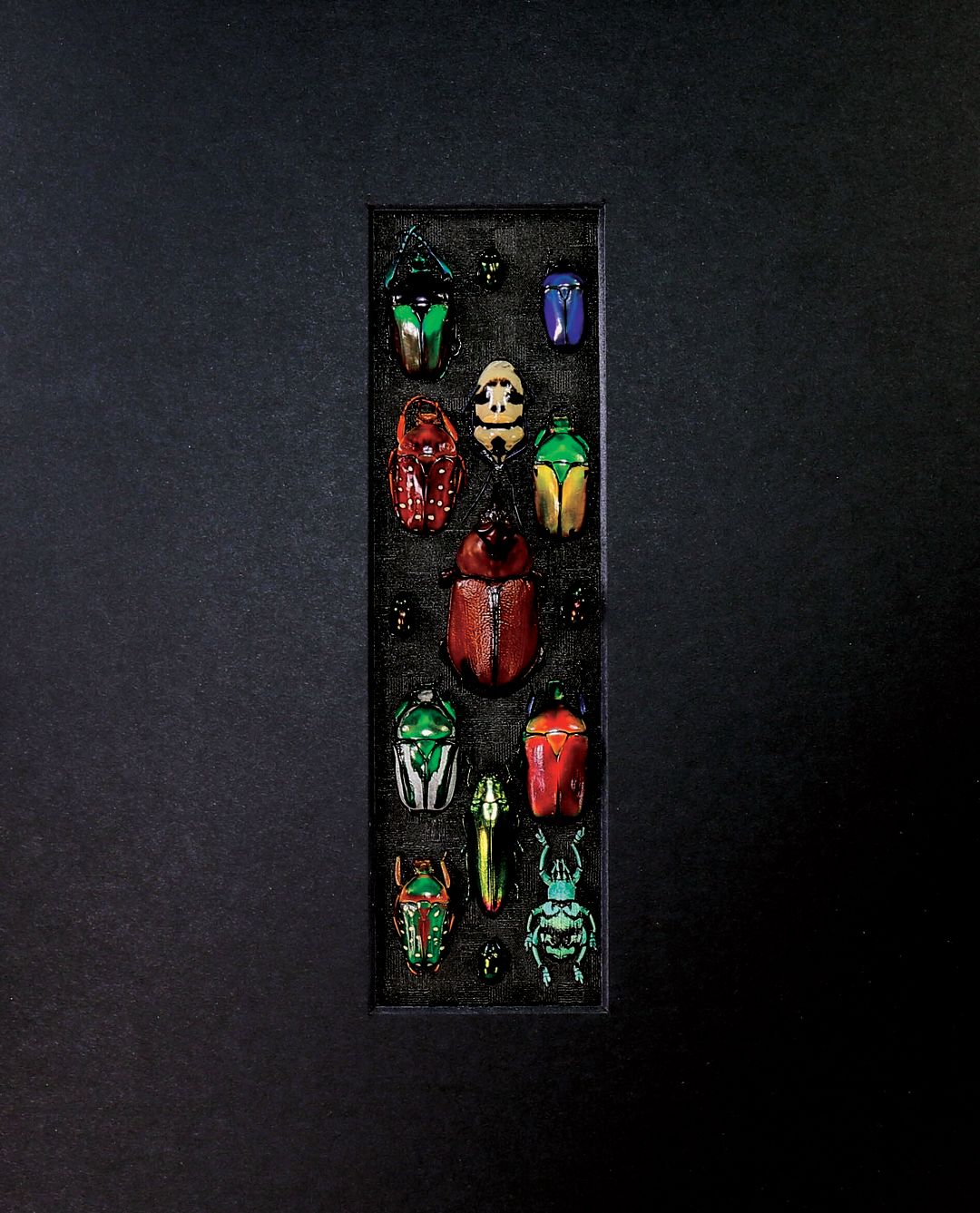The Tricky Craft of Insect Taxidermy

Open the freezer at Ruben Salazar and Tristan Erickson’s house, and odds are you’ll find the ice cream right next to a tarantula, wasp, or butterfly. “People are like, ‘You have a dead bug in your fridge,’” says Salazar, “and I’m like, ‘Yeah. I know.’”
It may sound like something out of a B-movie horror flick, but it’s actually just business as usual for the Humble-based couple, who run Bug in the Box, a luxury insect frame shop. Salazar and Erickson meticulously preserve, pin, and pose insects in shadowboxes and glass displays, transforming them into beautiful pieces of original art, from whiptail scorpions to yellow stick insects that sell for $368 at the Houston Museum of Natural Science retail store and online—and they do it all by hand.
What started as a passion project for Salazar, a former graphic designer who inherited his interest in insects from his entomologist mother, and Erickson, a lifelong nature lover, has metamorphosed into a local insect empire. In 2016, within two months of making a few Christmas gifts—featuring some of the insects Salazar and his mother had collected together before her death three years prior, as well as those the couple had found around their house—both quit their day jobs (Erickson worked in insurance) and devoted themselves to their delicate craft full-time.
It’s tricky work. After receiving a shipment of Lepidoptera (butterflies and moths) and other exotic bugs (think pink-and purple-winged grasshoppers and leaf insects that look like crawling foliage) from sustainable farms and sanctuaries across South America, Asia, and Africa—they also source Texas monarchs from the Cockrell Butterfly Garden—the couple spends two to three weeks rehydrating each specimen. This step employs a proprietary solution passed down from Salazar’s mother, and it ensures that the deceased animal’s fragile exoskeleton and wings don’t crack or break when mounted onto cork bark. Securing the insect in its desired position is a painstaking process that involves plenty of gloves, tweezers, and patience.
“Insects have scales,” says Salazar. “So any little brush of your finger, and the oils from your skin will brush the color right off.”

Since the insects have to then dry out again for up to nine weeks before they can be framed, some pieces can take three months to make. Even so, finding the art in arthropods is never the hard part.
“An insect is artwork in itself,” says Erickson, who points to the rare Peruvian blue morpho cypris, whose spotted, iridescent wings sparkle in the light; the red speckled jewel beetle of Thailand, whose ruby-hued head contrasts with its metallic-blue body and spotted, yellow wings; and the Madagascan moon moth, named for the long tails that flow from its wings, like comets streaking across the sky. “When you look at it and study the patterns on its body and wings, the colors—it’s God’s art. We’re just putting it in the spotlight.”
They’re also helping preserve these insects’ habitats by supporting farmers, indigenous people mostly, who’ve found that protecting insect habitats and selling bred (and deceased) insects is more profitable than clearing the areas for other purposes. “They’re actually helping keep the populations going,” says Salazar.
That’s a good thing, since these self-proclaimed “insect taxidermists” plan to spread their wings by making larger pieces. “We want to make big chandeliers with butterflies,” says Erickson.
Hopefully that will be okay with the occasional nervous entomophobe wandering into their showroom at the Silos at Sawyer Yards, like the select few who are afraid of butterflies (a real condition called lepidopterophobia).
“Since they’re in a frame, people aren’t so scared,” says Salazar. “It’s like, you make something that they consider ugly, beautiful.”




